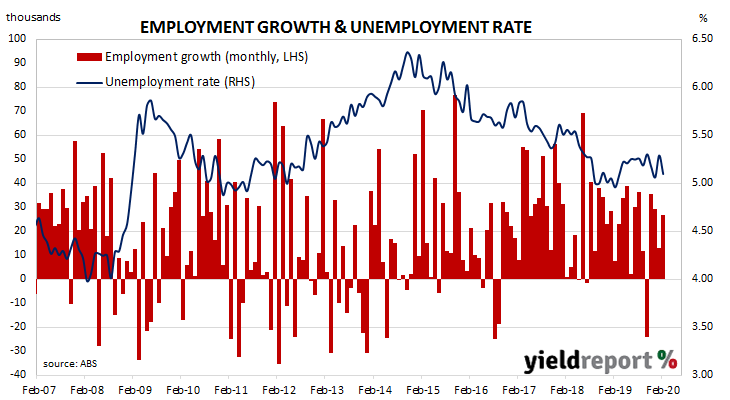Australia’s period of falling unemployment came to an end in early 2019 when the jobless rate hit a low of 4.9%. Since then, it has averaged around 5.2%, bouncing around in a range which extends from 5.1% to 5.3%. Recent leading indicators had been generally pointing towards further softness but the unemployment rate in recent months has been reasonably stable. Now economies are going into “care and maintenance” mode around the world, expectations of a rapid rise in unemployment have set in and recent economic figures prior to March are being largely discounted.
The latest Labour force figures have now been released and they indicate the number of people employed in Australia increased by more than economists had expected. The report showed the total number of people employed in Australia increased by 26,700 in February, while the unemployment rate fell back to 5.1% from 5.3%.
ANZ senior economist Catherine Birch said, “The February labour market data came in a lot stronger than our [expectations] or market expectations.” However, she noted,” the labour market data are backward-looking; the survey reference weeks were in the first half of February, prior to the escalation in the number of COVID-19 cases in Australia and elsewhere outside of mainland China.”

Market expectations prior to the report’s release were for 8,500 new positions to be created and for the unemployment rate to be maintained at 5.3%. Domestic Treasury bond yields increased noticeably at the long end in reaction to higher US yields and what the RBA described as impaired government bond markets while shorter-term notes and bonds fell in reaction to the RBA’s rate cut and its new 3-year bond yield policy. By the end of the day, 90-day bank bills remained unchanged at 0.60%, the 3-year ACGB yield had shed 8bps to 0.30% while 10-year and 20-year yields had each jumped by 30bps to 1.49% and 2.07% respectively.

